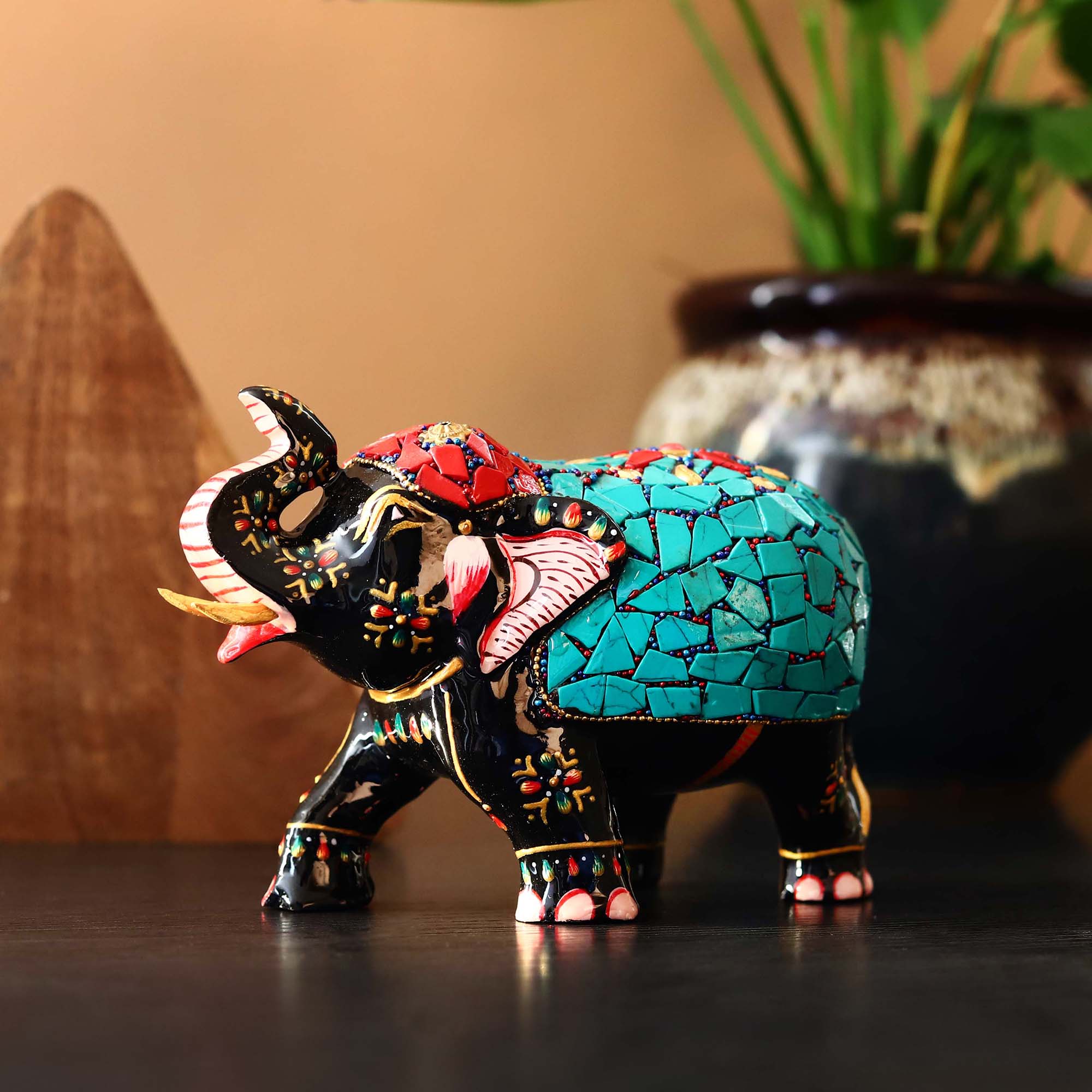Rajasthani Handicrafts: Introduction
Rajasthan, the vibrant and culturally rich state in India, is not only known for its majestic forts and colorful festivals but also for its exquisite handicrafts that reflect the heritage and artistic prowess of the region. The skilled artisans of Rajasthan have been creating masterpieces for centuries, showcasing a diverse range of traditional crafts that have stood the test of time. This article delves into the world of Rajasthani Handicrafts, exploring the techniques, materials, and cultural significance that make them truly exceptional.
Some Top Rajasthani Handicrafts:
The Land of Colors and Textures:
Rajasthan, with its diverse geography and cultural influences, has given rise to a wide variety of handicrafts. From the bustling markets of Jaipur to the remote villages nestled in the Thar Desert, every corner of the state contributes to the tapestry of Rajasthani crafts. The vibrancy of Rajasthan is mirrored in its crafts, which range from textiles and pottery to jewelry and leatherwork.
Block Printing and Textiles:
One of the most celebrated handicrafts of Rajasthan is block printing. The traditional art of hand-block printing on fabric has been passed down through generations. Skilled artisans carve intricate designs onto wooden blocks, and these are then used to stamp patterns onto textiles. Sanganer and Bagru, near Jaipur, are renowned for their block-printed fabrics that showcase a riot of colors and traditional motifs like flowers, birds, and geometric patterns.
Puppets and Puppetry:
Rajasthan’s puppetry tradition is world-famous. Intricately crafted puppets, known as Kathputlis, are made using wood, cloth, and strings. These colorful puppets often depict characters from folklore and mythology, entertaining audiences with tales of heroism and romance. The puppetry tradition is not just a craft; it is a living art form that has been performed for centuries, adding a dynamic cultural element to the handicrafts of the region.
Blue Pottery:
Jaipur is also known for its distinctive blue pottery, a craft that originated in Persia and found a new home in Rajasthan. The vibrant blue and white hues, derived from a unique mixture of quartz stone and Multani mitti (Fuller’s Earth), give these pottery pieces a distinctive appeal. Handcrafted by skilled artisans, blue pottery items include plates, bowls, tiles, and decorative pieces that adorn homes and showcase the elegance of Rajasthani artistry.
Jewelry Making:
Rajasthani jewelry is a testament to the state’s royal history and love for adornment. The intricate designs, often featuring meenakari (enameling) and kundan work, are crafted with precision. From the elaborate necklaces of the royalty to the tribal jewelry of rural communities, Rajasthan’s jewelry reflects the diversity and opulence of its cultural heritage.
Leather Craft:
The desert terrain of Rajasthan has given rise to a thriving leather industry. Traditional jootis (footwear), bags, and belts made from camel leather are skillfully crafted in the towns of Jodhpur and Jaipur. The artisans use age-old techniques to create durable and aesthetically pleasing leather products that have gained popularity both within India and internationally.
Rajasthani Carpets and Dhurries:
Rajasthan is renowned for its handwoven carpets and dhurries, which are woven using traditional techniques passed down through families. The carpets, often featuring intricate geometric patterns and vibrant colors, are crafted in towns like Jaipur and Bikaner. The dhurries, flat-woven rugs, are made from cotton or wool and are known for their durability and artistic designs. These floor coverings not only serve a functional purpose but also add a touch of Rajasthani artistry to homes worldwide.
Metalwork and Brassware:
The art of metalwork in Rajasthan is exemplified by the creation of exquisite brassware items. Skilled artisans in cities like Jodhpur and Alwar craft items such as utensils, figurines, and decorative pieces using traditional techniques like embossing and engraving. The intricate designs and fine detailing on brassware reflect the meticulous craftsmanship that has been a hallmark of Rajasthani metalwork for centuries.
Miniature Paintings:
Rajasthan has a rich tradition of miniature paintings that date back to the Mughal era. Artists in cities like Jaipur and Udaipur create intricate paintings depicting mythological stories, royal courts, and landscapes on small canvases. These detailed artworks often require a magnifying glass to appreciate the precision and skill involved. The use of vibrant colors and intricate brushwork makes Rajasthani miniature paintings highly sought after by art connoisseurs worldwide.
Wooden Crafts:
The desert state of Rajasthan may not seem like an obvious hub for wooden crafts, but skilled artisans in places like Shekhawati and Barmer have been crafting beautiful wooden furniture and decorative items for generations. Intricately carved wooden doors, screens, and furniture showcase a blend of traditional Rajasthani designs and practical utility, making them prized possessions for both locals and collectors alike.
Ceramics and Pottery:
In addition to the famous blue pottery, Rajasthan is home to various other ceramic and pottery traditions. The town of Khurja, near Alwar, is known for its unique style of ceramic pottery. Artisans create a diverse range of items, from vibrant kitchenware to decorative pieces, using techniques that have been passed down through the generations. The distinctive patterns and glazes contribute to the rich tapestry of Rajasthani pottery.
Conclusion:
Rajasthani Handicrafts Online are not just objects; they are a living testament to the rich cultural heritage of the region. The skilled artisans, carrying forward the legacy of their ancestors, continue to create masterpieces that blend tradition with contemporary aesthetics. The vibrant colors, intricate designs, and diverse range of crafts make Rajasthani handicrafts a symbol of India’s artistic prowess and cultural wealth. As these crafts continue to evolve, they ensure that Rajasthan’s heritage remains alive and cherished for generations to come.

